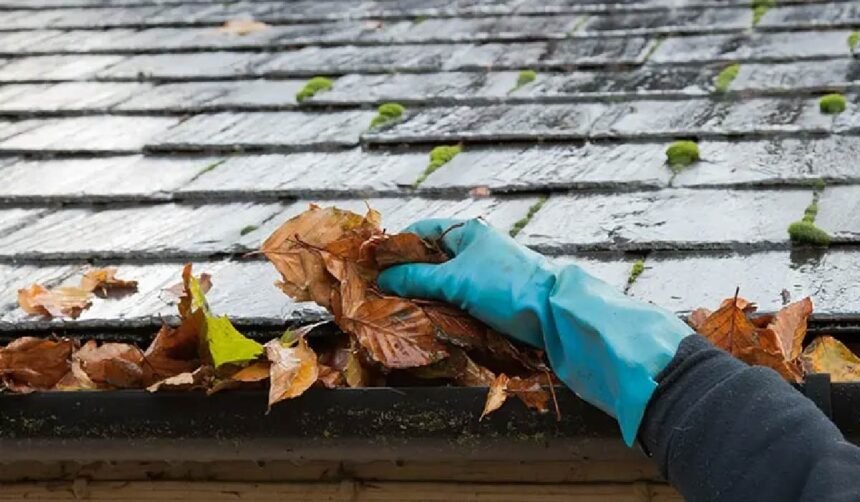When it comes to home or building maintenance, some tasks are easy to forget—especially the ones that are out of sight. Yet, one of the most critical systems protecting a structure from water damage is one that many property owners overlook: the gutter system. Designed to guide rainwater away from the roof and foundation, gutters play a vital role in safeguarding a building’s structural integrity. However, when these channels become clogged or damaged, they can quickly turn from protectors to problems.
Regular gutter cleaning is one of the most important—yet underrated—forms of preventative maintenance. This task might not seem urgent until issues begin to arise, such as water stains, roof leaks, or foundation erosion. Left unchecked, clogged gutters can lead to thousands of dollars in avoidable damage.
This article will explore the importance of gutter maintenance, what causes clogs, the dangers of neglect, proper cleaning techniques, and tips on how to choose between DIY or professional service.
The Critical Role of Gutters
Gutters are not just decorative roof accessories—they are engineered components of a water management system. They collect rainwater from the roof and channel it safely away from the foundation of your home or building. Without gutters, or with poorly functioning ones, you can expect a range of water-related problems.
Functions of a Gutter System:
- Prevent soil erosion: By diverting water away from the base of the structure.
- Protect foundation integrity: Saturated soil around a foundation can lead to cracks and structural instability.
- Prevent basement flooding: Water that pools near the base of a structure can seep through foundation walls.
- Protect siding and exterior paint: Overflowing gutters can cause unsightly streaks, mold growth, and paint damage.
- Preserve landscaping: Proper water flow prevents plant beds from being washed away during storms.
What Causes Gutter Clogs?
Gutters can become blocked by a surprising variety of materials. The severity and frequency of these clogs depend on environmental factors, roof design, and seasonal weather patterns.
Common Clog Culprits:
- Leaves and twigs: Especially in areas with overhanging trees.
- Pine needles: Thin but plentiful and notorious for packing tight into downspouts.
- Shingle granules: Asphalt shingles naturally shed granules over time.
- Bird nests and animal debris: Gutters are attractive nesting sites.
- Roof debris: Dirt, pollen, and general dust accumulate and turn to sludge when wet.
Even if your property isn’t surrounded by trees, wind can carry debris from a distance, and over time, even small amounts build up.
Consequences of Neglected Gutters
The problems caused by clogged or poorly maintained gutters go beyond mere inconvenience. Neglect can lead to serious structural, aesthetic, and health-related issues.
1. Roof Damage
When gutters are clogged, rainwater backs up onto the roof. This can lead to rot, mold, and leaks, particularly around the roofline and under shingles. During cold months, it also increases the risk of ice dams forming, which cause additional damage.
2. Foundation Problems
Excess water pooling near a structure’s base increases the risk of foundation cracking, sinking, or shifting. Over time, this can result in uneven floors, cracked walls, and compromised structural safety.
3. Basement Flooding
Overflowing gutters can direct water straight into the basement or crawlspace, creating musty odors, mold growth, and water damage.
4. Pest Infestation
Stagnant water in gutters creates a breeding ground for mosquitoes and attracts other pests like rodents, ants, and termites. A clogged gutter can easily become an open invitation for infestation.
5. Landscape Erosion
Water falling over the edge of blocked gutters hits the ground with full force. This can destroy flower beds, uproot shrubs, and erode walkways or soil barriers.
How Often Should You Clean Your Gutters?
There’s no one-size-fits-all answer, but general recommendations include:
- Twice a year: In spring and fall for most homes.
- Quarterly: For homes surrounded by trees or heavy foliage.
- After major storms: To clear out wind-blown debris and inspect for damage.
- Annually: For properties in arid climates with minimal vegetation.
While biannual gutter cleaning works for many, local conditions and roof design can increase the necessary frequency.
Signs Your Gutters Need Cleaning
Even if you haven’t climbed a ladder to check, there are warning signs you can spot from the ground.
- Water spilling over the sides during rainfall
- Sagging or pulling gutters
- Plants or moss growing in the gutters
- Water stains or streaks on siding
- Pools of water near the foundation
- Rust spots, cracks, or separations at the seams
Any of these issues can be the result of clogs, and addressing them early will save money and stress in the long run.
DIY Gutter Cleaning Tips
If you’re comfortable working on a ladder and the roof isn’t too steep or high, you can tackle gutter cleaning on your own. Here’s how to do it safely and effectively:
What You’ll Need:
- A sturdy ladder with a stabilizer
- Work gloves
- A small scoop or gutter cleaning tool
- A bucket or trash bag
- Garden hose with a spray nozzle
- Safety glasses
Step-by-Step Process:
- Set up safely: Place the ladder on stable ground and avoid leaning it against the gutter directly.
- Remove debris: Use your hands or scoop to extract debris and place it in a bucket or bag.
- Flush the gutters: Use a hose to wash out remaining debris and check for proper water flow.
- Check downspouts: Ensure they are not clogged and water exits freely.
- Inspect for damage: Look for cracks, holes, or loose connections that may need repair.
Pro Tip: Always have someone nearby when working on a ladder, especially if your roof is steep or high.
Benefits of Professional Gutter Cleaning
While DIY is possible, many homeowners opt for professional services due to convenience, safety, and thoroughness.
Advantages:
- Time-Saving: What could take you hours can be done in far less time.
- Expertise: Professionals know what to look for and how to fix minor issues before they escalate.
- Safety: Eliminates your risk of falls or injuries.
- Inspection Add-ons: Some services include roof inspections or minor repairs as part of the package.
- Proper Disposal: Debris is hauled away properly, saving you cleanup time.
Many property owners schedule recurring services to stay ahead of seasonal buildups.
Preventative Measures to Reduce Clogs
While cleaning is necessary, certain tools and strategies can reduce the frequency and severity of clogs.
1. Gutter Guards
These mesh or cover systems block debris from entering the gutter while allowing water to pass through. Though not maintenance-free, they drastically reduce the amount of buildup.
2. Trim Trees
Keep tree branches trimmed away from your roofline to reduce the amount of leaves and twigs falling into the gutters.
3. Proper Gutter Slope
Ensure your gutters are angled correctly to allow water to flow toward the downspouts. Improper slope causes standing water, which attracts debris and accelerates rust.
4. Install Splash Blocks or Downspout Extensions
These prevent water from pooling near the foundation, offering extra protection even if gutters briefly overflow.
Choosing a Gutter Cleaning Service
If you’re outsourcing the task, choose a reliable, insured, and experienced provider. Here’s what to consider:
- Licensing and Insurance: Protects you from liability.
- References or Reviews: Shows the company’s track record.
- Service Options: Some offer roof inspections, minor repairs, or gutter guard installation.
- Pricing Transparency: Watch out for hidden fees or extra charges.
- Satisfaction Guarantees: Reputable companies will offer some assurance of quality.
Scheduling regular gutter cleaning appointments helps prevent unexpected costs and issues over time.
Final Thoughts
Gutters are a critical yet underappreciated part of every property. They quietly protect your roof, foundation, landscaping, and more—until something goes wrong. Regular maintenance, especially gutter cleaning, ensures your system works efficiently year-round.
Whether you choose to do it yourself or hire a professional, what matters most is consistency. Investing a small amount of time and money today can save you from major repairs tomorrow. Don’t wait for water damage, leaks, or flooding to remind you of the importance of this simple, preventative maintenance task.









